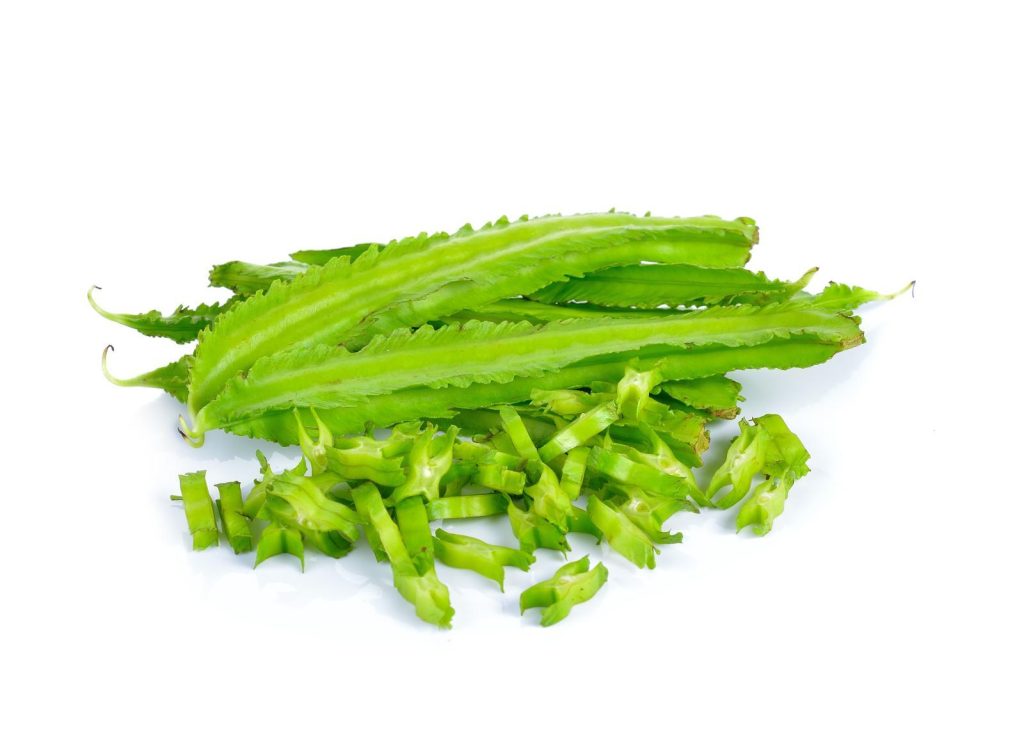Revealing the benefits of “winged beans”, a local vegetable with many uses, rich in calcium, dietary fiber, high protein, anti-oxidants, lowers cholesterol, and helps prevent some types of cancer.

Winged bean vegetable is a tropical plant. In Thailand, young shoots, young flowers, young leaves. And young pods are popularly eaten because they have a rich flavor. Therefore, they are considered a delicious side dish. They can be eaten with various chili pastes or added as ingredients in dishes such as Winged bean salad. Which helps to enhance the flavor very well. It is a climbing plant with no wood but lives for many years. The pods are parallelogram-shaped to strip-shaped. With a square cross-section and each corner of the pod has longitudinal wings.
The nutritional value of young pods per 100 grams provides about 19 kilocalories of energy, consisting of vitamin A, vitamin C, and calcium.
For mature seeds, the nutritional value is very high, comparable to soybeans. Mature seeds contain 15-18.3% oil, which consists of unsaturated fatty acids, หากคุณสนใจเล่นพนันออนไลน์ที่ดีที่สุด สามารถสมัครสมาชิก UFABET ได้ที่นี่ พร้อมรับโปรโมชั่นพิเศษสำหรับสมาชิกใหม่ alpha-tocopherol, and beta-tocopherol in high quantities.
Benefits of Winged Beans
Winged beans are a plant with low levels of anthocyanins,
which helps the body absorb calcium well. When eating winged beans, the body can absorb up to 39.1-51.9% of calcium.
Winged beans are a vegetable that is high in dietary fiber, which helps the digestive system to function normally and helps prevent constipation.
Eating winged beans at least 2-3 times a week can help prevent and reduce the division of cancer cells, help prevent breast cancer, and also have a positive effect on female hormones. This is because all legumes that can be eaten. With the pods contain substances that can inhibit the enzyme protease.
Eating both dried and fresh beans,
Such as winged beans, not only provides a lot of dietary fiber, but also helps reduce cholesterol.
Nowadays, winged beans are popularly grown along fences or in backyards. Or grown at the edges of fields to be used as a kitchen garden. The parts used for food include young shoots, young leaves, young flowers, young pods, and the sweet taste (used as a vegetable) and underground tubers (used as dried food).
In our country, we consume winged bean tubers by boiling them and eating them similar to cassava tubers. The underground tubers of winged bean tubers contain about 20-30 percent protein. Therefore, the tubers are processed into flour for use in cooking, candied for dessert. Or thinly sliced and fried like potatoes. They are also a high-protein snack.
The mature seeds contain 16-18% oil. Which can be extracted into vegetable oil for cooking. It also has properties similar to other types of vegetable oil. Winged bean oil contains 39% oleic acid, 27% linoleic acid, behenic acid, and parinaric acid, which do not cause cholesterol in the blood vessels. Winged bean oil also contains a very high amount of tocopherol, which is a substance that gives the oil a sweet taste and stability. It is useful in resisting free radicals and helps slow down the deterioration of cells in the body very well.
Winged bean has been used to treat acne and certain skin diseases.
Winged bean also has medicinal properties. The roots are used in herbal medicine and flower water is a medicine for heart disease and a tonic. Roasted or steamed underground tubers are eaten to help strengthen the body. Mature winged bean seeds can be dried and ground into powder. And dissolved in water, 5-6 grams at a time, eaten 3 times a day before meals to help nourish the body. However, you should eat just the right amount and eat a variety of 5 food groups for good health in all aspects.